Morning report: The Federal Reserve raised interest rates by the highest margin since 1994. Learn what it means for farmers. (Comments are updated by 7:30 a.m. Central Time.)
Corn up 1-4 cents
Soybeans mixed to down 1-4 cents; Soymeal up $1.80/ton; Soyoil down $0.60/lb
Chicago wheat up 1-2 cents; Kansas City wheat down 1-2 cents; Minneapolis wheat up 1-5 cents
*Prices as of 5:35am CDT.
Feedback from the Field updates! It’s the busiest time of year across the Heartland as farmers finish up planting spring 2022 crops and begin crop protection activities over the next few weeks. While our FFTF responses have trended lower over the past week, we are still receiving valuable insights from farm country.
Check out our newest Feedback from the Field column for all of the latest insights straight from the fields!
I have recently updated our survey to reflect current growing conditions, so you can share updated crop progress from your area as often as you would like through the survey portal! Just click this link to take the survey and share updates about your farm’s spring progress. I review and upload results daily to the FFTF Google MyMap, so farmers can see others’ responses from across the country – or even across the county!
Corn
Corn prices were slightly mixed to higher this morning, in response to hot temperatures in the Midwest that were triggering concerns about crop development. Cash demand also remains strong as ethanol and export demand remains robust.
Weekly ethanol production rates rose 2% from last week to 44.5 million gallons/day of output last week. That marks a two-week high for ethanol output and represents 115.4 million bushels of corn consumed for ethanol last week – the second highest weekly corn consumption of the 2022 calendar year.
Ethanol blending rates by refiners also edged 0.3% higher to 37.8 million gallons/day through the week ending June 10. Gasoline consumption is creeping up as summer travel season heats up, though is likely to face some resistance as gas prices remain elevated.
In short, ethanol production is providing a bullish floor for corn prices this summer.
Soybeans
Optimism over a larger Chinese sow herd reported for May 2022 – the first month-over-month increase to the breeding herd in a year – helped lift nearby soy futures higher overnight. Some bargain buying was also likely at play after four consecutive trading sessions of losses for the soybean complex. Hot temperatures in the Midwest are also creating market concerns about crop development.
But overarching economic weakness stemming from global inflation concerns triggered losses for new crop contracts to the tune of $0.01-$0.04/bushel.
“U.S. farmers have had a very wet start to the planting season for corn and soybeans,” Phin Ziebell, agribusiness economist at National Australia Bank, told Reuters last night. “It was flooding in some areas, so I think an outlook for dryness will be advantageous for the crops.”
The National Oilseed Processors Association (NOPA) released its May 2022 crush estimates yesterday. The May 2022 crush increased 0.8% from the previous month to 171.1 million bushels. It eclipsed the May 2020 crush of 169.6 million bushels as the largest May crush on record.
Daily crush rates continue to decline as the third quarter of the 2021/22 marketing year came to a close in May. May 2022 daily crush rates fell 2.5% from April to 5.5 million bushels processed per day.
The May 2022 crush reading came in just under the 171.6-million-bushel average trade guess leading up to the report. High cash bids around the Midwest suggest that domestic demand for soybean processing continues to be strong, especially as exports see an unseasonal increase.
NOPA also issued a correction to March 2022 soy crushing volumes, adding 706,000 bushels to update the total to 182.5 million bushels. The adjustment kept the March 2022 crush as the largest March crush on record.
Soy crush facilities with NOPA memberships handle approximately 95% of the soybean bushels allocated for crushing in the U.S.
Wheat
Wheat prices were mixed at last glance, as the market weighs favorable harvest weather for hard red winter wheat crops against ongoing spats between Russia, Turkey, Ukraine, and the West for access to Ukraine’s grain. A weaker dollar also helped encourage price gains this morning.
Kansas City futures edged a penny lower this morning while Chicago and Kansas City futures traded $0.01-$0.05/bushel higher as the hot temperatures raise concern about crop maturation and development.
Russia & Ukraine
Top global wheat importer Russia increased its purchases of Russian wheat by 84% between March and May relative to last year. Despite some added payment complications from sanctions and shipping snafus, Egypt was still able to obtain adequate supplies amid the ongoing market volatility surrounding the Russian-Ukrainian war.
“Egypt is still price-oriented. They look at it from an economic point of view. No one cares about the politics of it,” a trader told Reuters.
This indicates that global food buyers are likely losing sympathy for Ukraine’s (and the West’s) cause against Russia as these countries battle soaring domestic food costs. African countries reliant on wheat for calories are especially susceptible to increased animosity as drought grips the Horn of Africa.
I expect to see this dynamic intensify as Russia’s bumper crop is harvested in the coming weeks.
Turkey continues to try to broker a U.N.-advised deal between Russia and Ukraine to access Ukraine’s grain, though still to no avail. Turkish Foreign Minister Mevlut Cavusoglu acknowledged yesterday it would “take some time” to de-mine Ukraine’s Black Sea ports before grain cargoes could pass safely through. But there is hope for some workarounds.
“Since the location of the mines is known, certain safe lines would be established at three ports,” Cavusoglu said. Cavusoglu predicts that these lines would allow ships to “come and go safely to ports without a need to clear the mines.”
Russia continues to offer “safe passage” for grain cargoes in the Black Sea but is unwilling to assist with mine removal.
Inputs
Fuel markets have largely traded sideways this week, though they remain at elevated levels. Crude oil futures closed yesterday’s trading session nearly 1% lower but price pain for buyers continues to persist just above the $121/barrel benchmark.
As farmers finish up crop protection activities, their focus will likely turn to harvest preparation. Given the late start to the 2022 growing season, dryer fuel may be high on farmers’ buying list this summer.
The market could provide some seasonal price breaks for growers, as I outline in my latest E-corn-omics column. But there is a strong chance that the window to minimize fall fuel expenses will likely be a narrow one this summer, given ongoing production issues. Check out my column for all the latest intel on the fuel market!
Weather
Temperatures in the Upper Midwest will remain moderate today, according to NOAA’s short-range forecasts. Blistering temperatures will continue to roast the Southern Plains and Eastern Corn Belt.
Showers and thunderstorms will linger over the Great Lakes and Central Mississippi Valley regions over the next 24 hours, dropping up to an inch of rain in a band stretching from Missouri to Michigan.
NOAA’s 6- to 10-day and 8- to 14-day forecasts updated yesterday are trending hot for the Heartland but with above average chances of moisture for the Mountain West (!) and dry conditions for the Corn Belt.
Financials
The Federal Reserve announced a 0.75% increase in the federal-funds target interest rate yesterday following the conclusion of the June 2022 Federal Open Market Committee (FOMC) meeting. The benchmark fed funds rate now hovers between 1.5-1.75%.
It was the largest rate increase implemented by the Fed in 28 years.
The race to halt inflation is intensifying, as Fed chair Jerome Powell announced that the FOMC would now target a rate of 3.375% by the end of 2022. Powell warned markets that another 0.75% increase coming at the July 2022 FOMC meeting.
Powell reassured market watchers that the Fed is not trying to trigger a recession – which is what many in the financial markets are worried about with regards to rising interest rates. Powell continues to aim for a “soft landing” in which the economy would slow enough to cool inflation, but not so much as to start a recession.
“The events of the last few months have raised the degree of difficulty” of accomplishing that goal, Powell said yesterday. “There’s a much bigger chance now that it’ll depend on factors that we don’t control. Fluctuations and spikes in commodity prices could wind up taking that option out of our hands.”
May 2022 retail sales dropped 0.3% from the previous month, according to the U.S. Commerce Department. It was the first time in the 2022 calendar year retail spending has dipped. While one analyst told the Wall Street Journal that it indicated potential for a “soft landing,” Powell told reporters yesterday afternoon that “overall spending is very strong.”
“We see the economy slowing a bit but still at healthy growth levels.”
Powell also noted that the Fed is increasingly facing difficulties in predicting labor market behavior, the well-being of which, along with inflation/interest rates, is one of the Fed’s key objectives. Powell expressed concern that the labor market could suffer casualties of the accelerated rate hikes.
“There is a path to get there,” Powell said in the post-meeting press conference. “It’s not getting easier, it’s getting more challenging because of these external forces.”
Ongoing supply chain issues since the pandemic’s onset continue to plague the economy. Extra cash from government stimulus, rapid shifts in consumer purchasing patterns, and changing labor force dynamics following the pandemic triggered much of the supply chain upheaval and have kept global economic recovery from the pandemic in limbo. Russia’s invasion into Ukraine added another layer of complexity to the global pandemic recovery.
The Fed is taking a more aggressive stance on raising interest rates relative to the past few months as inflationary pressures continue to take a toll on both the domestic and global economies. In the U.S., inflationary pressures are currently notching new 40-year highs with the May 2022 CPI reading showing an 8.6% increase in consumer goods since last year.
Markets greeted the news favorably after dropping into bearish territory earlier this week after last Friday’s higher-than-expected inflation reading. Treasury yields for 10-year notes dropped to 3.372% after Powell’s announcement, down from recent highs of 3.435%.
“Markets are pricing in a Fed that’s trying to get in front of the curve rather than behind the curve on inflation,” Art Hogan, chief market strategist at National Securities told the Wall Street Journal yesterday. That helped lift stocks heading into Wednesday’s rate decision, Mr. Hogan added.
For farmers, it means that borrowing costs will be higher going forward. The lower 10-year yield was a reassuring sign that loan rates are not going sky rocket back to levels to match those of the 1980s, even though they are a bitter pill to swallow after the low rates of the past couple years.
S&P 500 futures continued their descent into bear territory this morning, falling a staggering 2.07% to $3,715.00 as market optimism following yesterday’s Fed rate hike faded. Widespread concerns about high inflation and rising interest rates pushing the economy into recession replaced the optimism, triggering overnight stock losses.
Also – happy Stanley Cup finals! My husband has played hockey since he was young and is a diehard Colorado Avalanche fan, so the past few weeks have been very exciting in our household. I’m by birth a Chicago fan, but I can’t resist cheering for the home team and night’s game was thrilling to watch. An OT win?! Yes, please! GO AVS!
What else I’m reading this morning on our website, FarmFutures.com:
Will you become a carbon farmer? Executive editor Mike Wilson calls for government polices that let farmers profit form practices that remove carbon and cool the planet.
Mike Downey has the right tax-friendly steps on how to get farmland out of a corporation.
What can farmers learn from the crypto currency meltdown? Advance Trading’s Ryan Fogel has a few pointers.
Bryce Knorr implores you to not get too hung up on USDA’s corn ratings too early in the season.
Our team’s June 2022 WASDE coverage!
“Look but don’t touch,” is increasingly becoming the theme of the market volatility surrounding Ukrainian grain, writes AgMarket.Net’s Brian Splitt.
Morning Ag Commodity Prices – 6/16/2022
Contract
Units
High
Low
Last
Net Change
% Change
JUL ’22 CORN
$ / BSH
7.7925
7.73
7.74
0
0.00%
SEP ’22 CORN
$ / BSH
7.335
7.2875
7.31
0.02
0.27%
DEC ’22 CORN
$ / BSH
7.2625
7.205
7.24
0.03
0.42%
MAR ’23 CORN
$ / BSH
7.3075
7.2575
7.285
0.0225
0.31%
MAY ’23 CORN
$ / BSH
7.32
7.27
7.3175
0.0425
0.58%
JUL ’23 CORN
$ / BSH
7.28
7.24
7.28
0.04
0.55%
SEP ’23 CORN
$ / BSH
6.71
6.7
6.7075
-0.0025
-0.04%
JUL ’22 SOYBEANS
$ / BSH
17.09
16.905
16.9125
-0.025
-0.15%
AUG ’22 SOYBEANS
$ / BSH
16.2825
16.0925
16.0975
-0.04
-0.25%
SEP ’22 SOYBEANS
$ / BSH
15.625
15.435
15.4375
-0.0225
-0.15%
NOV ’22 SOYBEANS
$ / BSH
15.3925
15.205
15.21
-0.025
-0.16%
JAN ’23 SOYBEANS
$ / BSH
15.4025
15.24
15.2425
-0.035
-0.23%
MAR ’23 SOYBEANS
$ / BSH
15.3025
15.13
15.13
-0.035
-0.23%
MAY ’23 SOYBEANS
$ / BSH
15.2675
15.095
15.1025
-0.0175
-0.12%
JUL ’23 SOYBEANS
$ / BSH
15.205
15.0525
15.055
-0.0225
-0.15%
AUG ’23 SOYBEANS
$ / BSH
0
#N/A
14.825
0
0.00%
JUL ’22 SOYBEAN OIL
$ / LB
78.2
77.04
77.08
-0.59
-0.76%
AUG ’22 SOYBEAN OIL
$ / LB
76.42
75.26
75.29
-0.55
-0.73%
JUL ’22 SOY MEAL
$ / TON
422.4
418
419.1
1.6
0.38%
AUG ’22 SOY MEAL
$ / TON
409
405.1
405.4
0.9
0.22%
SEP ’22 SOY MEAL
$ / TON
398.4
394.8
394.8
-0.4
-0.10%
OCT ’22 SOY MEAL
$ / TON
391.9
387.9
387.9
-1.4
-0.36%
DEC ’22 SOY MEAL
$ / TON
394.1
390
390.1
-1.4
-0.36%
JUL ’22 Chicago SRW
$ / BSH
10.615
10.4875
10.5125
0.0125
0.12%
SEP ’22 Chicago SRW
$ / BSH
10.7475
10.62
10.645
0.01
0.09%
DEC ’22 Chicago SRW
$ / BSH
10.8925
10.76
10.79
0.005
0.05%
MAR ’23 Chicago SRW
$ / BSH
10.9825
10.875
10.9025
0.02
0.18%
MAY ’23 Chicago SRW
$ / BSH
11.0075
10.9125
10.9125
0
0.00%
JUL ’22 Kansas City HRW
$ / BSH
11.4425
11.28
11.32
-0.0125
-0.11%
SEP ’22 Kansas City HRW
$ / BSH
11.51
11.355
11.385
-0.0175
-0.15%
DEC ’22 Kansas City HRW
$ / BSH
11.5875
11.4375
11.4825
0
0.00%
MAR ’23 Kansas City HRW
$ / BSH
11.625
11.5
11.515
-0.02
-0.17%
MAY ’23 Kansas City HRW
$ / BSH
11.555
11.5475
11.5475
0.065
0.57%
JUL ’22 MLPS Spring Wheat
$ / BSH
12.0875
11.99
12.0625
0.05
0.42%
SEP ’22 MLPS Spring Wheat
$ / BSH
12.0975
12
12.03
0.015
0.12%
DEC ’22 MLPS Spring Wheat
$ / BSH
12.1025
12.05
12.0525
0.015
0.12%
MAR ’23 MLPS Spring Wheat
$ / BSH
12.14
12.1375
12.14
0.065
0.54%
MAY ’23 MLPS Spring Wheat
$ / BSH
9.8925
#N/A
12.0775
0
0.00%
SEP ’21 ICE Dollar Index
$
105.28
104.49
104.83
-0.105
-0.10%
JU ’21 Light Crude
$ / BBL
116.96
114.34
114.78
-0.53
-0.46%
AU ’21 Light Crude
$ / BBL
114.68
112.34
112.77
-0.32
-0.28%
JUL ’22 ULS Diesel
$ /U GAL
4.539
4.4673
4.4887
-0.0583
-1.28%
AUG ’22 ULS Diesel
$ /U GAL
4.3974
4.3193
4.3485
-0.0523
-1.19%
JUL ’22 Gasoline
$ /U GAL
3.9603
3.88
3.8825
-0.0117
-0.30%
AUG ’22 Gasoline
$ /U GAL
3.8291
3.7566
3.7614
-0.0091
-0.24%
AUG ’22 Feeder Cattle
$ / CWT
0
#N/A
173.275
0
0.00%
SEP ’22 Feeder Cattle
$ / CWT
0
#N/A
175.1
0
0.00%
JU ’21 Live Cattle
$ / CWT
0
#N/A
137.55
0
0.00%
AU ’21 Live Cattle
$ / CWT
0
#N/A
136.8
0
0.00%
JUL ’22 Live Hogs
$ / CWT
0
#N/A
108.275
0
0.00%
AUG ’22 Live Hogs
$ / CWT
0
#N/A
104.325
0
0.00%
JUN ’22 Class III Milk
$ / CWT
24.32
24.32
24.32
-0.02
-0.08%
JUL ’22 Class III Milk
$ / CWT
24.25
24.15
24.15
-0.11
-0.45%
AUG ’22 Class III Milk
$ / CWT
24.32
24.32
24.32
-0.08
-0.33%
Get our top content delivered right to your inbox. Subscribe to our morning and afternoon newsletters!




